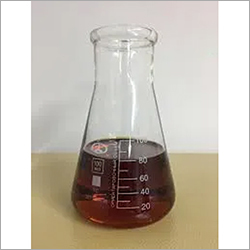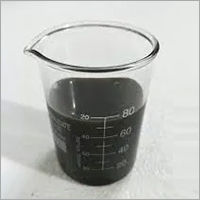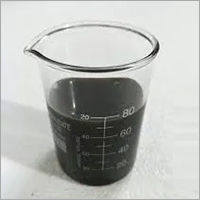- Home Page
- Company Profile
-
Our Products
- Food Preservatives
- Speciality Chemicals
- Petroleum Sulfonates
- Sodium Petroleum Sulphonate (RP Grade)
- Sodium Petroleum Sulfonate (Emulsifier Grade)
- Calcium Petroleum Sulphonate (Neutral)
- Barium Petroleum Sulfonate (Neutral)
- Magnesium Petroleum Sulfonate
- Calcium Petroleum Sulfonate (30TBN)
- Calcium Petroleum Sulfonate (400TBN)
- Barium Petroleum Sulphonate
- Petroleum Sulfonate
- Calcium Petroleum Sulfonate (300TBN)
- Lubricant Additives
- Heavy Duty Engine Oil Additive
- 2T Oil Additive ( GL 2004)
- 4T Engine Oil Additive
- Gear Oil Additive
- Quenching Oil Additives
- Engine Oil Additive CI4-CH4
- Circulating and Turbine Oil Additives
- Marine Oil Additives
- Spindle Oil Additive
- Rust Preventive Oil Additives
- Metal Working Fluids Additive
- 2T Engine Oil Additive
- Engine Oil Additive
- Hydraulic Oil Additive
- Cutting Oil Additive
- Lubricant Components
- Viscosity Modifiers
- Extreme Pressure Additive
- Polyisobutylene Succinic Andhydride
- Butylated Octylated Diphenylamine
- Pour Point Depressant
- TBN Boosters
- Antioxidant ZDDP
- TBN Booster Calcium (400TBN)
- TBN Booster Magnesium (400TBN)
- Zinc Dialkyldithiophosphate GL9334
- 300 TBN Booster Calcium
- Polyisobutenyl Succinic Anhydride
- Zinc Dialkyldithiophosphate
- Polyisobutylene Succinimide PIBSI
- Dispersant Additive
- Viscosity Index Improvers
- Pour Point Despresant
- Phenolic Antioxidant
- TBN Booster Calcium (300TBN)
- Brake Fluid
- Contact Us

Butylated Octylated Diphenylamine
285 INR/Kilograms
Product Details:
- Color Brown
- Type Liquid
- Oil Type Engine oils, Gear oils,
- Vehicle Type Auto, Cars, Motorcycle
- Pack Type Drum
- Click to view more
X
Butylated Octylated Diphenylamine Price And Quantity
- 285 INR/Kilograms
- 25 Kilograms
Butylated Octylated Diphenylamine Product Specifications
- Auto, Cars, Motorcycle
- Brown
- Drum
- Liquid
- Engine oils, Gear oils
Butylated Octylated Diphenylamine Trade Information
- 100 Kilograms Per Day
- 6 Days
Product Description
Butylated Octylated Diphenylamine (BODPA) is a chemical compound that is often used as an antioxidant and stabilizer in various applications, particularly in the rubber and polymer industries. It is part of a class of chemicals known as diarylamines, which are commonly used to inhibit the degradation of materials caused by oxidation.BODPA is used to prevent or slow down the oxidative degradation of rubber and polymer products, including tires, gaskets, hoses, and other automotive and industrial rubber components. Oxidation can lead to the deterioration of these materials, causing them to become brittle and lose their properties over time. By adding BODPA, manufacturers can extend the service life and performance of their products.This chemical compound acts as a radical scavenger, which means it helps neutralize and stabilize free radicals that are generated during the oxidation process. It effectively inhibits the chain reactions that can lead to the degradation of rubber and polymer materials. BODPA is favored for its high thermal stability and compatibility with various polymers, making it a useful additive in many applications where oxidative stability is critical.Butylated Octylated Diphenylamine Properties: 1. Antioxidant Properties: BODPA is primarily known for its antioxidant properties. It can effectively inhibit the oxidation of materials, such as rubber and polymers, by neutralizing free radicals and preventing chain reactions that lead to degradation.2. Thermal Stability: BODPA exhibits high thermal stability, which means it can withstand elevated temperatures without breaking down. This property is important in applications where materials are exposed to heat or thermal stress.3. Compatibility: BODPA is compatible with a wide range of rubber and polymer materials. It can be easily blended or incorporated into various formulations without causing adverse reactions.4. Longevity: BODPA helps extend the service life of rubber and polymer products. By preventing oxidation, it reduces the deterioration of materials, making them last longer and maintain their desired properties.5. Solubility: BODPA is typically soluble in common organic solvents, which makes it easier to incorporate into the manufacturing process of rubber and polymer products.6. Resistance to Volatility: BODPA is not highly volatile, meaning it doesnt readily evaporate at normal temperatures. This is important in applications where the antioxidant needs to remain in the material for an extended period.7. Chemical Structure: BODPA is a diarylamine compound, featuring multiple aromatic rings in its structure. The specific arrangement of its chemical groups allows it to effectively scavenge and quench free radicals.8. Regulatory Considerations: When using BODPA or any chemical compound, its important to consider regulatory guidelines and safety precautions to ensure proper handling, storage, and disposal.# FAQ: Q. What is BODPA?Ans: BODPA, or Butylated Octylated Diphenylamine, is a chemical compound known for its antioxidant and stabilizing properties. It is commonly used in the rubber and polymer industries to prevent oxidation and extend the lifespan of materials.Q. How does BODPA work as an antioxidant?Ans: BODPA functions as an antioxidant by scavenging and neutralizing free radicals generated during the oxidation process. It interrupts the chain reactions that can lead to the degradation of rubber and polymer materials.Q. What are the main applications of BODPA?Ans: BODPA is primarily used in the production of rubber products, such as tires, gaskets, hoses, and various industrial components. It helps maintain the integrity and performance of these materials by inhibiting oxidative degradation.Q. What is the significance of thermal stability in BODPA?Ans: BODPAs high thermal stability is important because it allows the compound to withstand elevated temperatures without breaking down. This property is crucial in applications where materials are exposed to heat or thermal stress.Q. Is BODPA compatible with all types of rubber and polymer materials?Ans: BODPA is known for its compatibility with a wide range of rubber and polymer materials, making it a versatile choice for many applications.Q. How is BODPA typically incorporated into products?Ans: BODPA is often added during the manufacturing process of rubber and polymer products. It can be blended or mixed into the material to provide antioxidant protection.Q. Does BODPA have any potential health or environmental concerns?Ans: Like many chemical compounds, its essential to follow safety guidelines and regulatory recommendations when handling BODPA to minimize potential risks to human health and the environment.Q. Is BODPA volatile?Ans: BODPA is not highly volatile, meaning it does not readily evaporate at normal temperatures. This characteristic is valuable when the antioxidant needs to remain in the material for an extended period.Q. How does BODPA compare to other antioxidants?Ans: The choice of antioxidant depends on the specific needs and materials used in a particular application. BODPAs selection is based on its compatibility and effectiveness with certain rubber and polymer formulations.Q. Are there any regulatory considerations for using BODPA?Ans: Yes, its important to adhere to regulatory guidelines and safety precautions when using BODPA, including proper handling, storage, and disposal in accordance with local and international regulations.FAQs of Butylated Octylated Diphenylamine:
Q: What types of vehicles is Butylated Octylated Diphenylamine suitable for?
A: Butylated Octylated Diphenylamine is suitable for auto vehicles, cars, and motorcycles.Q: What type of oils can Butylated Octylated Diphenylamine be used in?
A: It can be used in engine oils and gear oils.Q: In what form is Butylated Octylated Diphenylamine available?
A: Butylated Octylated Diphenylamine is available in liquid form.Q: What is the packaging type of Butylated Octylated Diphenylamine?
A: Butylated Octylated Diphenylamine is packaged in drums.Q: What is the color of Butylated Octylated Diphenylamine?
A: The color of Butylated Octylated Diphenylamine is brown.Tell us about your requirement

Price:
Quantity
Select Unit
- 50
- 100
- 200
- 250
- 500
- 1000+
Additional detail
Mobile number
Email







 Call Me Free
Call Me Free
